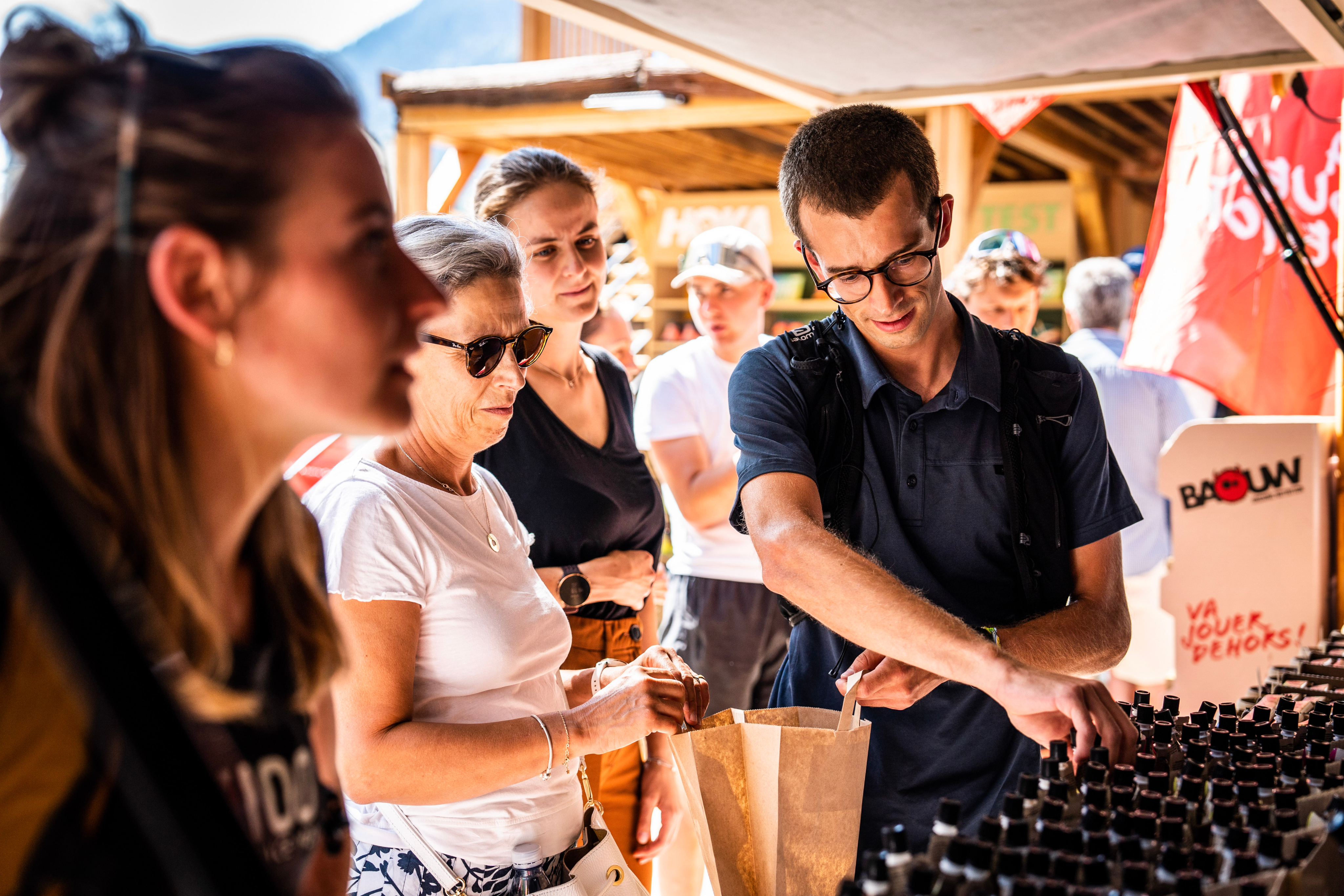Getting properly equipped for running in winter
Clothing designed for running without overheating
First and foremost, remember that nothing beats the famous layering technique (or the “onion” method). To run in maximum comfort, the ideal outfit is:
- A breathable base layer: forget cotton, it traps sweat. Instead, opt for a technical fabric that easily wicks moisture away from your skin. Merino wool is particularly effective in this regard!
- An insulating midlayer: its purpose is to keep you warm while allowing air to circulate. Fleece is a good choice.
- a windbreaker or waterproof jacket: perfect for dealing with wind and rain.
To ensure your comfort during your run, don't forget to wear gloves, a hat (or versatile neck warmer) and a pair of thermal socks. Your extremities are more sensitive to the cold, so don't neglect these areas, or you'll have a much less enjoyable run!
Running and black ice: nothing works anymore
Cold weather is fine, but ice is another story! To avoid unexpected and potentially dangerous slips, choose shoes with grippy, waterproof soles. If you're planning on walking on snowy trails or long distances through the mountains, crampons or overshoes can make all the difference. It may seem extreme, but it could save you from an embarrassing (and painful) fall!
Eating well before and after winter running: focus on nutrition and hydration
Energy intake before exercise: not to be overlooked under any circumstances
In winter, your body uses more energy to keep warm, so you need to adjust your fuel intake. Before heading out into the cold, it's a good idea to fill up on carbohydrates so you can enjoy sustained energy. Our purées énergétiques, for example, will provide you with the necessary energy without weighing down your stomach: 100% suited to quick digestion and a light start.
For their part, our energy gel are not to be overlooked, as they are designed to provide you with a gradual release of carbohydrates. Practical, they slip easily into your pocket and are ready to use when you feel hungry. However, it should be noted that this article is specifically about preparing for a run of varying intensity. On the other hand, you will need to adopt a specific triathlon nutrition For example, if that's the event you're preparing for. Athletes know how to adapt, and nutrition is no exception!
Endurance sports, cold weather and the risk of dehydration
Even if you sweat less, winter also causes you to lose water, especially with cold air drying out your skin. And as you know if you regularly read our articles, at Baouw, we don't mess around with the issue ofhydratation Also, remember to drink before you set off (at least 250 ml in the hour before your run) and after exercise to compensate for fluid loss. Waters rich in electrolytes are extremely useful for restoring fluid balance, especially after an intense workout. Saint-Yorre is a top choice, particularly thanks to its high sodium bicarbonate content. And if that's not enough, in the ‘ultimate’ category, there's also our electrolyte tablets, specially created to offer you complete and intelligent hydration at any stage of your workout!
Our practical tips for running in winter
Winter or not, we always warm up before running!
Before going for a run in winter, don't skip your warm-up, which is even more important in cold weather because your muscles are naturally more tense. By taking a few minutes to do dynamic movements such as knee lifts, jumping on the spot or arm rotations, you warm up your muscles and prepare yourself for the effort ahead, while reducing the risk of injury. And the good news is that you can warm up indoors before bravely braving the cold!
Similarly, don't skip stretching after your run! Even if you're dreaming of hot chocolate and a blanket, stretch your muscles well to avoid soreness the next day. A 5-minute post-run session can really make a difference. Don't forget that
Visibility and safety during your winter runs
Winter days are short, and if you run early in the morning or late in the afternoon, visibility can be a real issue. So don't skip wearing clothes with reflective strips to stay visible. A headlamp or light-up armbands are also great options, especially if there's fog or snow. Your safety comes first!
Baouw's tips to make running in winter nothing but fun!
If there's one thing that unites us in the Baouw team, it's sport! So it's with full knowledge of the facts that we conclude our article with a few tips to help you enjoy running in winter as much as you enjoy running in the spring sunshine:
- Not a fan of hats? Equip yourself with your best fleece headband! Some people are more sensitive than others and can quickly suffer from headaches when their ears are not covered. It would be a shame if your top-notch training turned into a big flop because of the cold wind.
- After running, you know that your body cools down quickly... and you can feel it! To delay this inevitable and necessary cooling down, you can do some muscle strengthening exercises before stretching. Guaranteed to prevent hypothermia!
- Don't forget the importance of breathing. When you go running in winter, it is advisable to breathe in through your nose and breathe out through your mouth. Breathing in through your nose allows the oxygen to warm up before it reaches your lungs and bronchioles. This prevents you from catching a cold.
- Have you just finished an intensive running session in the middle of winter? Replenish your glycogen stores and give your body everything it needs with our protein drinks for athletes. The result is a recovery process that is all about enjoyment!
Running in winter means encountering the cold and fresh air, which is sure to invigorate you! With the right clothing, proper nutrition and safety precautions, you'll not only be ready to face the winter season, but also enjoy it to the fullest. So get outside, breathe in the fresh air and let your shoes leave tracks in the snow. In short... go play outside!







